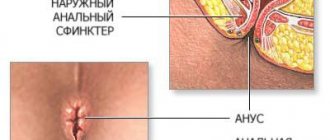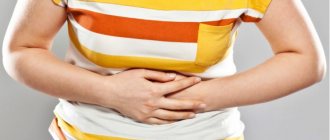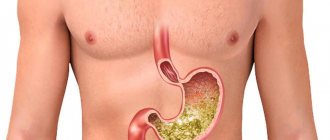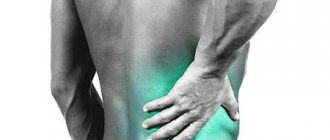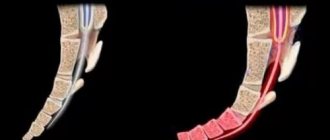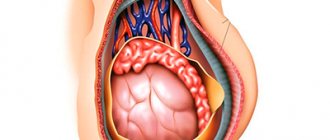Why does pain occur in the anus in women?
External stimuli
The most common cause of pain in women in the absence of pathological changes is uncomfortable underwear, especially thongs, which rub the skin and put increased pressure on the anus. During menstruation, pain can be caused by the use of poor-quality pads. Sometimes pressing sensations are observed when using tampons, more often - against the background of unemptied bowels.
Anal fissure
Patients with the acute form of the disease note severe pain, which appears with the onset of defecation, sometimes radiating to the sacrum or perineum. In chronic pathology, the pain syndrome is provoked by spasm of the anus, it bothers you after defecation, persists for a long time, and intensifies in a sitting position. Bloody discharge is scanty. Possible itching.
Haemorrhoids
In uncomplicated chronic hemorrhoids, the pain is dull, pulling, aching, and there is a predominance of burning and distension. Unpleasant manifestations occur during the act of defecation and gradually disappear over a period of several minutes to several hours. Thrombosis of hemorrhoids is characterized by constant severe pain in the perineum and anus, not associated with defecation.
Pain during thrombosis increases as inflammation develops, bothers you at night, is combined with a sensation of a foreign body, and sometimes with weakness, fatigue, and increased body temperature. Pain and inflammation are also present with prolapsed hemorrhoids, especially in the final stages of the disease. Anal itching and frequent bleeding are observed. The development of the infectious process is indicated by increased symptoms, severe pain, and general hyperthermia.
Pain in the anus in women
Proctitis
The main symptoms of proctitis are pain, intensifying during bowel movements, itching, and disturbances in defecation. In acute proctitis, the pain is severe, appears suddenly, and is combined with tenesmus. Sometimes it radiates to the genitals, perineum, lower back. Body temperature is subfebrile, less often febrile. The nature of the symptoms varies somewhat depending on the form of the disease:
- Catarrhal proctitis.
The pathology develops over several days, all manifestations are moderate. Constipation is replaced by periodic diarrhea. - Erosive proctitis.
Frequency of stools predominates. Tenesmus with subsequent discharge of a mixture of mucus and blood is possible. In severe cases, there is a gaping of the anus, free flow of liquid feces, and bloody-mucous discharge. - Ulcerative proctitis.
The symptoms are the same as in other forms, but the course is more severe. A significant amount of blood covers formed feces or is located in the form of inclusions in liquid feces. - Radiation proctitis.
Symptoms appear during or after radiation therapy. There is a painful urge to defecate. Mucus is released from the anus, and less often, blood.
In patients with chronic proctitis, the signs of pathology are mild or moderate, the pain is dull, the condition is satisfactory. Periodic relapses are observed with symptoms reminiscent of the clinical picture of acute proctitis.
Proctalgia
Pain in the anus is caused by muscle spasm, is not associated with the act of defecation, and occurs at any time of the day, including at night. It feels like stabbing, sharp, spastic. It can radiate to the perineum, tailbone, and hip joints. Anal sphincter spasm develops suddenly and lasts minutes or hours. Over time, attacks often become more frequent.
Tumors
The symptom is provoked by benign and malignant tumors. Polyps and villous tumors remain hidden for a long time. The symptom appears with large neoplasia, accidental injury, the development of inflammation, and the appearance of erosions. With cancer and melanomas of the anorectal region, clinical manifestations rapidly progress, pain intensifies, from dull to acute, supplemented by tenesmus, separation of blood and mucus.
Injuries and foreign bodies
Pain in the anus is often observed after anal intercourse and is explained by multiple microtraumas of the mucous membrane, and can be accompanied by a burning sensation, stool disorders, and fecal incontinence. Foreign bodies enter the rectum through the gastrointestinal tract, are inserted into the anus during non-standard sexual practices, when attempting to independently perform medical procedures, or during mental disorders.
With a recently inserted blunt object, the pain is aching, pressing, bursting. Foreign bodies with sharp edges, fish bones, and toothpicks cause damage to the intestinal wall, which is manifested by severe pain and frequent urges. Unbearable excruciating pain is evidence of damage to the intestinal wall and the release of a foreign object beyond its boundaries.
A fecal stone can be considered a type of foreign body. Small stones are asymptomatic; large stones cause spastic pain and chronic constipation, alternating with bouts of diarrhea. After intestinal injury, the symptom intensifies.
Other proctological diseases
Acute paraproctitis is characterized by sharp, tugging, pulsating pain, swelling, suppuration, and signs of general intoxication. In women with chronic paraproctitis, the symptom occurs due to blockage of the fistula. Regular bursting pain during defecation with subsequent improvement of the condition is observed with an incomplete internal fistula. In patients with rectal prolapse, pain in the lower abdomen predominates at the time of prolapse. Unpleasant sensations in the anus may be associated with compression and the development of inflammation. Other possible reasons are:
- cryptite;
- papillitis;
- perianal dermatitis;
- pararectal dermoid cyst;
- coccydynia.
Sharp painful urges with the inability to hold feces can be observed in women suffering from fecal incontinence. The pathology often manifests itself after childbirth, less often it occurs some time after the birth of the child.
Stool disorders
Pain from constipation is provoked by the pressure of feces, injuries to the anus during bowel movements. Acute and chronic diarrhea also leads to pain in the anal area, which is explained by spasms, overstretching of the sphincter, and the development of perianal dermatitis.
Physiological conditions in women
Some women report dull, pressing pain in the anus during premenstrual syndrome due to the accumulation of fluid in the uterorectal cavity. Pain is often a concern during pregnancy. The causes are constipation and pressure from an enlarged uterus. The likelihood of developing pain syndrome increases in the presence of proctological diseases, previous injuries, and operations.
Diseases of the female reproductive system
The symptom accompanies the following diseases of the internal genital organs:
- Adnexitis.
The pain is more pronounced during the acute process. There is pain in the lower abdomen, radiating to the anus and sacral area. Possible pathological discharge from the vagina, disturbances in general condition, bloating, dysuria. - Endometriosis of the rectum.
Cyclic pain occurs during menstruation or a few days before it begins. They can be local or diffuse, covering the anus and perineum. Intensifies during sexual intercourse. When the deep parts of the intestinal wall grow, they become more intense and are accompanied by constipation and bloating. - Ectopic pregnancy.
When the fertilized egg is rejected, a sharp pain appears in the lower abdomen, radiating to the anus, legs, and lower back. Spotting or bleeding from the vagina, tachycardia, decreased blood pressure, severe weakness, and loss of consciousness are detected. - Apoplexy of the ovary.
The pain is constant or paroxysmal, cramping, stabbing. It is localized in the lower abdomen, radiating into the anus, rectum, perineum, navel, and lower back. Possible fainting, weakness, vomiting, cold sweat. - Rectovaginal fistula.
Pain in the projection of the anus is combined with a burning sensation in the vagina and perineal area. Increases during sexual intercourse. Gases and feces are released from the vagina.
Diseases of the genitourinary system
Irradiation into the anus in women is observed with cystitis and stones in the bladder. The clinical picture is complemented by cutting, aching or pressing pain in the lower abdomen, expressed by dysuric phenomena. With urolithiasis, acute attacks are possible, followed by the appearance of blood in the urine.
Proctological examination
Paroxysmal anal pain and anal pain at night
Contents
hide
1 Paroxysmal anal pain and anal pain at night
2 What is paroxysmal anal pain?
3 Other causes of anal pain
4 Anal pain at night - tests and diagnosis
5 Ways to relieve pain in the anus 5.1 Related posts:
Rectal pain is a fairly common and unpleasant condition. Mostly harmless, but causing significant discomfort to the patient. The skin around the anus is richly innervated, so any changes cause unpleasant symptoms. Rectal pain may occur at night. Causes of anal pain include: hemorrhoids, anal fissure, perianal abscess, idiopathic pain syndromes such as anal paroxysmal pain.
Diagnostics
The cause of pain in the anus is determined by a proctologist. Women with suspected pathology of the reproductive system are referred to a gynecologist. If there are signs of damage to the urinary tract, an examination by a urologist is required. The examination program includes the following methods:
- Visual inspection
. When examining the anus and perianal area, rashes, maceration, fistulous tracts, prolapsed hemorrhoids or rectum may be detected. - Digital rectal examination.
Helps confirm the presence of enlarged hemorrhoids, neoplasms, inflammatory infiltrates, foreign bodies, and areas of intussusception. Supplemented by examination using rectal speculum. - Examination on the chair (gynecological).
It is carried out to assess the condition of the vagina and external genitalia, detect fistulas, and areas of endometriosis. The perineum, urethra, pelvic floor muscles, uterus, and appendages are examined by palpation. - Anoscopy and sigmoidoscopy.
Allows you to visualize signs of inflammation, erosion, ulcerative defects, volumetric processes, cracks, enlarged and inflamed hemorrhoids, foreign bodies, fistula tracts, scar changes. - Sonography.
An ultrasound of the rectum is performed to diagnose traumatic injuries, hemorrhoids, fistulas, pararectal cysts, polyps, and tumors. Contraindicated in acute conditions. Ultrasound of the pelvic organs in women reveals space-occupying formations, ectopic pregnancy, endometriosis, and other gynecological pathologies. - Anal manometry.
It is prescribed to determine decreased or increased sphincter tone in case of incontinence and muscle spasm. Can be supplemented with electromyography. - Lab tests
. According to the coprogram data, inflammation, signs of bleeding from erosions, ulcers and neoplasms, and parasitosis are confirmed. Microbiological examination makes it possible to clarify the nature of the causative agent of the inflammatory process, morphological analysis - to establish the structure and degree of differentiation of tumors. - Other techniques
. According to indications, women are prescribed colonoscopy, irrigoscopy, diagnostic laparoscopy, and biochemical studies of stool.
Rectal prolapse
Rectal prolapse is a disease that is diagnosed when the rectum partially or completely extends beyond the anus. The pathology is accompanied by pain and constant discomfort, which prevent the patient from leading a full life. The causes of rectal prolapse have not yet been established, but factors that increase the likelihood of developing the disease include chronic constipation and straining during bowel movements, childbirth, and features of the anatomical structure of the pelvis and intestines.
Rectal prolapse progresses slowly and in the initial stages is characterized by only minor pain and a feeling of pressure in the anal area that occurs during bowel movements. As the disease develops, intestinal prolapse occurs with the slightest strain or without it, and the disease requires surgical treatment.
Treatment
Pre-hospital assistance
A woman needs to exclude everyday and sexual causes of pain: use comfortable underwear, high-quality pads, prevent functional constipation by following a diet, exclude anal intercourse and sexual games with elements of anal masturbation. Taking medications before diagnosis is not indicated. Increasing pain, deterioration of general condition, copious discharge of blood from the anus are reasons for an urgent consultation with a proctologist.
Conservative therapy
The program of conservative treatment of proctological diseases includes the following methods:
- Diet.
Women are advised to avoid spicy, salty and fatty foods to prevent constipation, reduce the amount of coarse fiber to form soft feces, reduce the intensity of pain and trauma to the anus during defecation. - Rectal suppositories
. Suppositories with analgesic, softening and anti-inflammatory effects reduce the severity of symptoms, have an enveloping effect, and protect the rectal mucosa from damage during bowel movements. - Antibiotics
. Recommended for women with acute inflammatory processes: proctitis, paraproctitis, papillitis, cryptitis, complications of non-inflammatory diseases. - Hormonal agents
. Corticosteroids are prescribed during exacerbation of hemorrhoids, with severe proctitis. Quickly eliminate swelling and inflammation. Used in a short course if there are sufficient indications. - Phleboprotectors
. Indicated for patients with hemorrhoids. They help strengthen veins, slow down the enlargement of nodes, and reduce the risk of bleeding and thrombosis. - Local procedures
. Microenemas with oil solutions, chamomile decoction, local anesthetics, perineal showers, sitz baths with a solution of potassium permanganate are effective. - Physiotherapy
. For diseases of the rectum and perianal area, ultrasound, laser therapy, and diadynamic therapy are used.
For diseases of the female genital area, antibiotic therapy, hormone therapy, and painkillers may be required. Systemic therapy is supplemented with local procedures and physiotherapy.
Proctalgia
Proctalgia is a pain syndrome that occurs with muscle spasms in the rectum and anus. The duration of pain during the disease depends on the duration of the spasm. Painful attacks can last from a few seconds to several hours. The frequency of spasms during proctalgia can be influenced by defecation and its disturbances, and sexual activity. The pain can be sharp, sudden, and also intensifies when sitting.
Since painful attacks in most cases are short-term and end on their own, treatment is not carried out. With greater duration and frequency of pain, warm baths and local remedies to relieve spasm of the rectal muscles help reduce symptoms.
Possible complications of constipation
Frequent constipation may be accompanied by heaviness in the abdomen and pain before, during or after bowel movements. Such problems can lead to unpleasant consequences. Most common complications:+
- poisoning of the body;
- exacerbation of hemorrhoids;
- rectal fissures;
- risk of cancer.
General intoxication due to stagnant feces can cause deterioration in health and decreased performance. Disruption of the intestinal microbial balance during chronic constipation leads to exacerbation of allergic diseases, skin rashes, and a decrease in the body's resistance to infections.
It is known that the risk of developing colorectal cancer is higher in people with chronic constipation. Delayed bowel movements lead to disruption of cholesterol metabolism and the development of atherosclerosis, and consequently, cardiovascular diseases.
Diseases of the anorectal area often accompany constipation. This is due to the fact that dense feces injure the mucous membranes of the rectum, which causes the appearance of anal fissures. And an increase in intra-abdominal pressure can lead to the formation of hemorrhoids.
Prevention of pain due to constipation
For the normal functioning of the gastrointestinal tract, you need to drink a sufficient amount of water - at least 1.5–2 liters per day. If constipation is associated with decreased tone of the intestinal muscles and is accompanied by spasms, it is recommended to drink cold mineral water. One glass of water on an empty stomach and before each meal will improve the consistency of stool and facilitate its movement through the intestines.
Water also participates in the process of gas diffusion - some of the gases are absorbed from the intestines into the blood, so an optimal drinking regime is effective as a way to prevent flatulence, including those associated with constipation.
It is important to avoid overeating and sudden changes in diet. It is necessary to minimize stress and maintain a sleep schedule. Researchers say that following a daily routine will help prevent constipation: you should get up and go to bed at approximately the same time, and set aside enough time to go to the toilet in the morning, after breakfast. It is under no circumstances recommended to restrain the urge to defecate, as this can lead to constipation and a decrease in the sensitivity of the intestinal receptors to stretching.
Recommendations regarding diet for existing constipation also apply to prevention: try to eat a sufficient amount of fiber-rich foods, make up your diet from lean meats and fish, cereals, dairy products, fresh fruits, vegetables, herbs, and berries.
Regular preventive visits to the doctor will help exclude gastrointestinal diseases or detect them at an early stage. This is especially important if you are at risk for developing disorders - you have an endocrine disease, pathologies of the digestive system, are limited in physical activity, etc.
You can prevent the occurrence of severe pain due to constipation by observing your body: determine the optimal frequency of bowel movements; ideally, bowel movements should be every morning. If stool is delayed for at least one day, try to take immediate action, if possible: increase the volume of fluid you drink, choose foods with a laxative effect.
Types of hemorrhoids
The pathological condition of the rectum in women and men can be expressed in the following forms:
- external;
- internal;
- combined.
If nodes and seals are visible to the naked eye, then we are talking about external hemorrhoids. In the case when hemorrhoidal cones are beyond the reach of a person’s vision, inside the rectum, then this type of disease can safely be called internal. If there are formations of dense tissue both inside and outside, then this is a combined type. Let us dwell in more detail on internal hemorrhoids.

